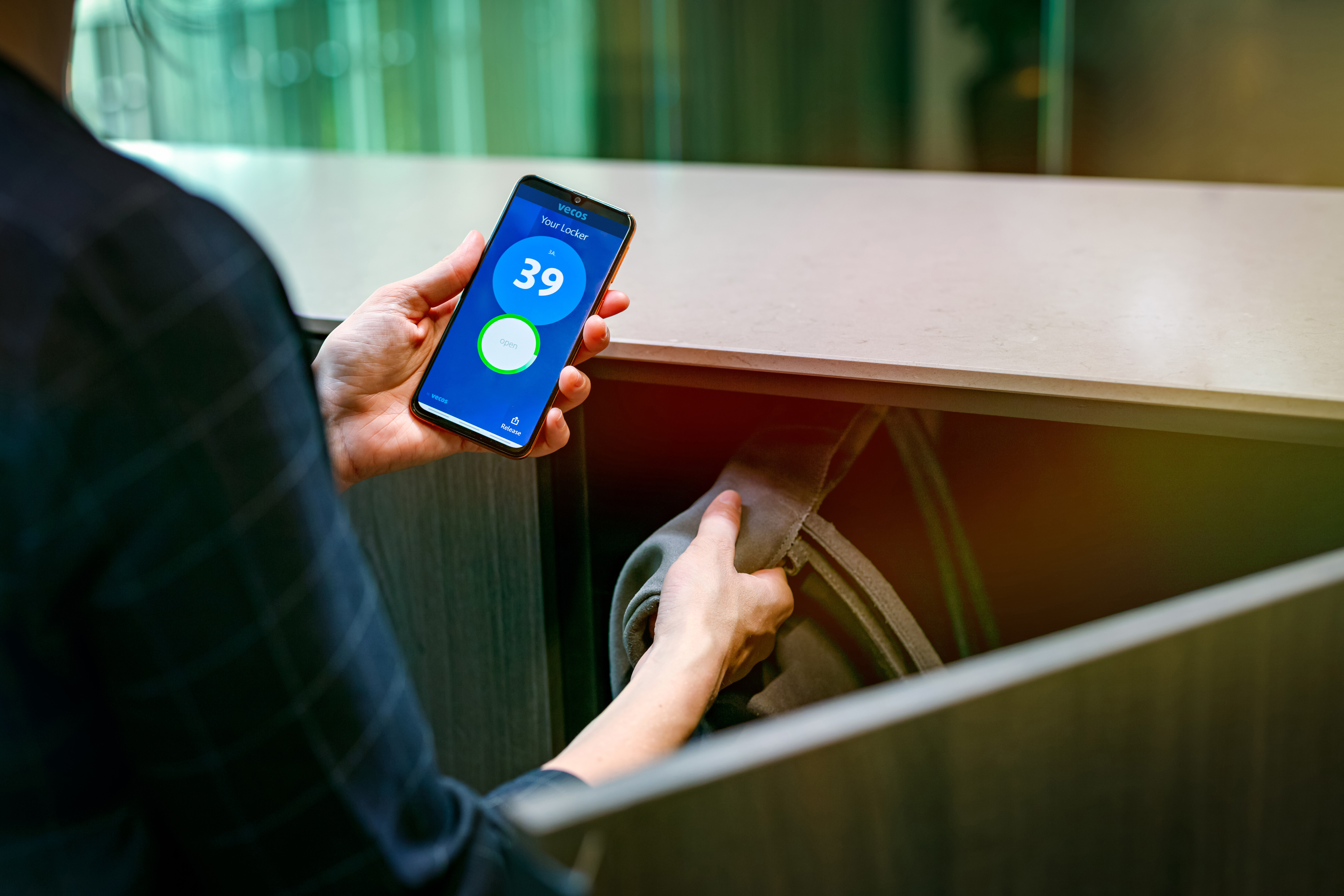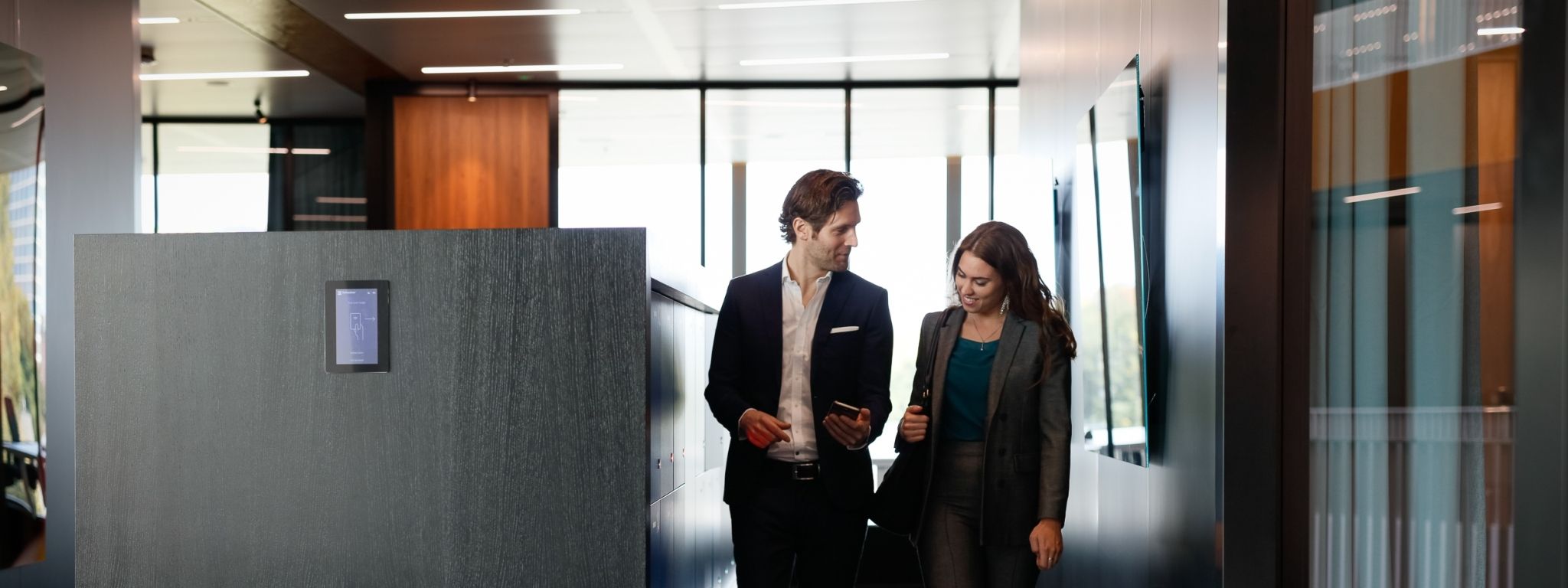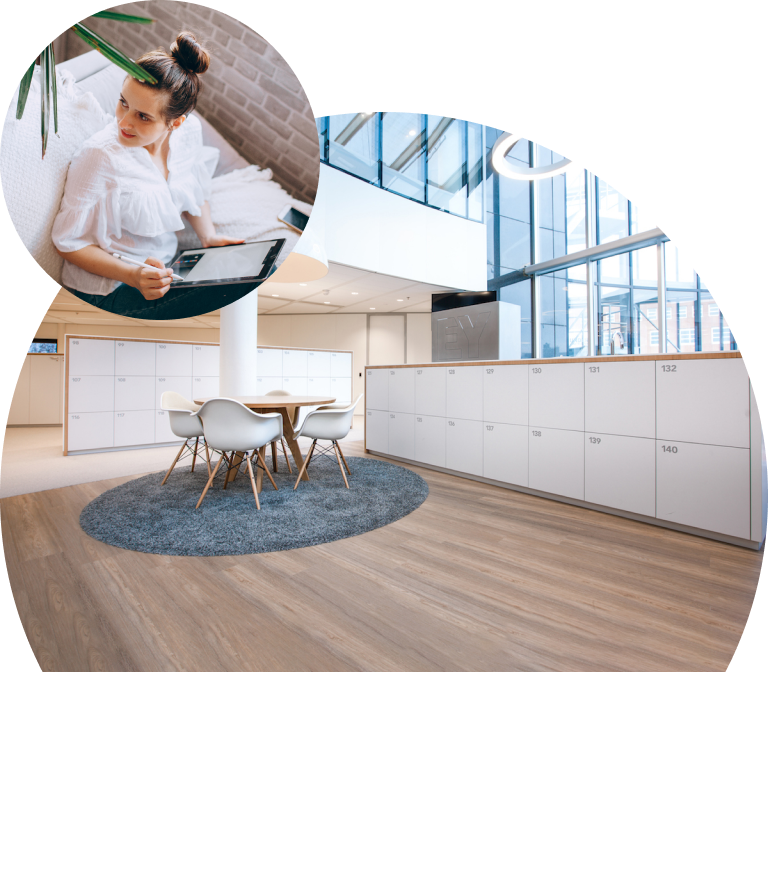As workstyles change and workplaces adapt to flexible ways of working, the relevance of workplace storage is greater than ever. Smart lockers are automated, self-service lockers with integrated technology. The goal of smart lockers is to improve employee experience whilst decreasing workplaces' total cost of ownership.
With the new way of working, people are not in the office every day. In addition, most offices are now moving to flexible ways of working. That means there are no fixed desks for employees. Thus, workplace storage needs to evolve to fit workplace flexibility. And that’s exactly what smart lockers do. Smart lockers enable your people to work how they want, with secure storage when and where they need it.
Hybrid workplaces demand the latest workplace technology
The world of work is evolving fast across the globe. Some trendsetting organizations have already moved to a fully hybrid and dynamic reality. Others are undertaking the development in phases. The more cautious are observing the trends and calculating their next move. No matter what type of organization you are, the global standards in workplace technology are changing, to support the ‘new normal’ of dynamic and hybrid working.
In a more flexible workplace - with people mixing days in the office with days working at home - established ways of using space, and the provision of office furniture and facilities, need to be re-evaluated. The idea is that when people are based at the office, they are free to collaborate, connect and work in the way that suits them best and supports productivity. So, the outcome of an evaluation will quickly highlight that rows of fixed desks, under-desk storage, and manual facilities, make less sense and are not really fit for purpose.
“We are witnessing the birth of new global standards in workplace technology in response to major global shifts in how we work – it’s all about providing smart, seamless, scalable, and secure workplace facilities. The demand for smart locker systems is sky-rocketing – they’re simply better for the user, manager, and the business” Bram Kuipers, Vecos CEO

How are office lockers evolving?
A workplace that's hybrid or dynamic requires people need to move through the workplace effortlessly and seamlessly. They choose their work location based on the type of work they need to do for that day. In this context, space to work individually and with others is less fixed. And when people are freed from a fixed desk, they need a new style of personal storage not bound to a specific location.
Smart lockers, available on-demand, self-service, and easy to use, start to make tons of practical sense. On the softer side, it also provides a more personal space within the shared dynamic space. With this combination of practical and emotional benefits, flexible storage becomes critical to employee productivity and well-being.
If the workplace locker strategy is set up and managed correctly, it can quickly become an enabler for the dynamic workplace. However, if office lockers do not keep up with the pace of change in workstyles, it can cause significant barriers to productivity and flow.
So, what is a smart locker?
Smart lockers are always a combination of hardware (normally an electronic locking mechanism) and software (the operating terminal, management application, and user app). The electronic lock is connected to an operating terminal, which is then connected through IoT to a Software-as-a-Service (SaaS) platform.
The software platform is the most critical component of a successful smart locker system. It’s where a business defines the criteria under which lockers can be used, automates employee records, and integrates with all the other workplace IoT and IT systems in the workplace digital ecosystem. Leading smart locker platforms are designed to be multi-tenant, secure by design, and instantly scalable. Exactly the things you need in times of change.
The smart locker system can be configured for employee lockers, team-, post & collection-, changing room-, static or day lockers. So, the set-up can be fully customized to the need, as well as be re-configured simply and efficiently as needs change.
What are the different types of smart lockers?
Read about our use cases here
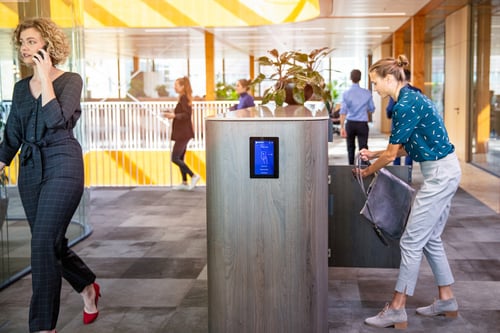
What is the difference between a smart locker and a traditional locker?
Did you know that 40% of traditional office lockers go unused? … Interestingly, many organizations have no idea they are wasting too much space and cost, as it is such a big task to manually track and optimize their usage.
There are many limitations that come with choosing traditional key or pin-code lockers. For the user, they are often less flexible and more fixed in location. The regular loss of keys and pin codes is disruptive, the experience is ‘old-school’ and does not keep in step with a smart building experience. For facilities managers, many of the same frustrations apply, just on a much larger scale.
Traditional lockers make locker management a nightmare!
With the management of traditional workplace lockers, keys are often issued to employees, and manual records are kept logging who has what key(s) – like spreadsheets, sign-in/out sheets, or other tracking systems. Security is of course paramount, but there are obvious limitations to what’s feasible when keys go missing or people ‘pass over keys’, ‘try and replace lost keys’ and/or ‘swap or share lockers’ without informing FM.
Security can become a real issue, as does managing movers/leavers/joiners, implementing health and safety protocols given COVID-19, and reporting and solving any issues. The manual nature of allocating & managing traditional lockers, also makes it very hard to identify unused lockers, people ‘camping out’ in lockers, or people claiming multiple lockers unnecessarily.
In contrast, smart lockers or digital lockers are all connected to the central ‘smart locker system’ so cloud-based records are constantly being generated of several points of data – down to the individual locker occupancy rates or user profiles and usage. With a smart locker system, you can even nudge people (via text messages) to release their locker if it’s not needed – which FM will know based on a ‘not used for XX time’ protocol.
Traditional lockers do not make the management of ‘change’ easy
With traditional lockers, managing change is time intensive at best and a nightmare ‘jigsaw puzzle’ at worst. Manual systems make the management of leavers and joiners a ‘task’, but imagine the time needed to manage wholesale change such as introducing new COVID-19 cleaning protocols or accommodating new hybrid work schedules for a big workforce.
On the other hand, smart lockers make it easy to manage changes. In the case of employee turnover, there is no panic to rekey a lock - the locker can simply be deactivated from access by the former employee within seconds. Furthermore, smart lockers provide full oversight and full access by the employer. So, there is no longer a need to cut open locks on an employee locker. This saves time and money for the employer.
Traditional lockers do not provide the security and data of a smart system
The smart locker system keeps several data points to create an audit trail. Staff can be held accountable for loss and/or upkeep of their locker, automatically. Streamlined processes and better inventory control are simplified with smart lockers, which can result in less waste and loss of both productivity and goods. Some of the largest banks in the world work with the smart locker system, as they trust in the technology, knowing it has passed the toughest of data security audits (the Vecos system, for example, is ISO27001 certified).

What’s the business case for smart lockers versus traditional lockers?
Smart lockers are designed to adapt and scale as needed. It requires a higher initial investment compared to traditional key or pin code lockers, but the return on this investment is typically realized within two to eight months from implementation. The business case already stacks up, but keep reading to see five key areas in which organizations get payback from a smart locker management system:
- Less facility management time needed
The time FM spends on locker management drops significantly by around three hours per 100 lockers per week.
- Higher employee productivity results
Employees gain one more hour of productivity per 100 lockers per week. This is because they are not spending time looking for available storage or traveling across the building to retrieve their belongings, nor is there wasted time from lost keys or pin codes.
- Fewer physical lockers are needed when used dynamically
Smart locker systems require up to 40 percent fewer physical lockers. The management process is streamlined to eradicate poor locker behavior and optimize efficiency in usage.
- Floorspace is optimized because fewer lockers needed
Fewer lockers mean less furniture on the floor space. FM can achieve up to 40 percent more floor space by optimizing locker management.
Read more about the benefits of smart lockers here.
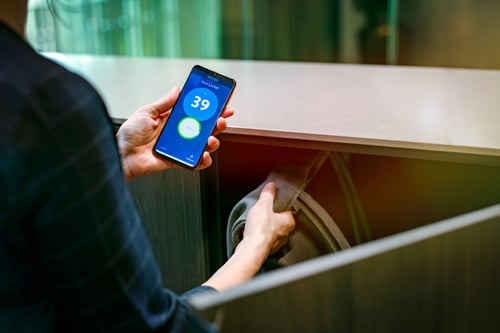
Why does the modern office need smart lockers?
There are some key features of smart lockers, that support the modern dynamic office and help take the office experience to the next level. Here’s a quick run-down of the top 10.
1. A more efficient locker strategy – fewer lockers, less floorspace, more dynamic usage
2. Smart lockers are designed to be on-demand, self-service and hassle-free
3. FM’s save up to 90% of management time via remote and automated management
4. It’s a cloud-based, SaaS solution – secure, adaptable, scalable, and always ‘on’ and always up to date
5. It’s more sustainable– you can do a lot more, with less
6. Data analytics and reporting are made easy and actionable via the management software
7. Guaranteed seamless Integration with any existing digital ecosystem or 3rd party applications
8. Smart lockers are secure by design and ISO27001 certified
9. Multilingual interface options support global protocols and inclusion programs
10. Benefit from remote monitoring, diagnostics & repair
Read more: How to select the right smart locker system?
How much do smart lockers cost?
When it comes to the cost of smart lockers, it's important to note that there isn't a one-size-fits-all answer. The cost of smart lockers can vary based on a number of factors, including the size of the office space, the number of employees, and the specific features that are desired.
Factors such as the type of smart locker technology being used, the level of security required, and the complexity of the installation process can also impact the overall cost of the project. Additionally, ongoing maintenance and support costs should be factored in as well.
Therefore, it's important to carefully consider all of these factors when deciding on the cost of smart lockers for your workplace. It may be helpful to consult with a professional vendor or installer who can help evaluate your specific needs and provide an estimate based on those factors.
The ‘standard’ locker of the future will be a smart locker. So why not join the frontrunners, today.
If you’re determined to get one step ahead and want to be inspired by the frontrunners adopting new workplace technologies to improve the dynamic experience, you might want to read some case studies.
Read our case studies
Looking ahead
As we look to the future, it’s clear that the pandemic has acted as a catalyst for many existing and emerging employee expectations – from flexible working to seamless digital experiences. On a global scale, a smart locker system is a critical part of the technology stack, that will enable high-performance dynamic workplaces to thrive. Indeed, every modern office really should have one.





-2.jpg)
